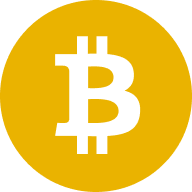
Tether Gold price

Disclaimer
OKX does not provide investment or asset recommendations. You should carefully consider whether trading or holding digital assets is suitable for you in light of your financial condition. Please consult your legal/tax/investment professional for questions about your specific circumstances. For further details, please refer to our Terms of Use and Risk Warning. By using the third-party website ("TPW"), you accept that any use of the TPW will be subject to and governed by the terms of the TPW. Unless expressly stated in writing, OKX and its affiliates (“OKX”) are not in any way associated with the owner or operator of the TPW. You agree that OKX is not responsible or liable for any loss, damage and any other consequences arising from your use of the TPW. Please be aware that using a TPW may result in a loss or diminution of your assets. Product may not be available in all jurisdictions.
Tether Gold market info
Market cap = Circulating supply × Last price

Tether Gold price performance in USD
Popular Tether Gold conversions
| 1 XAUT to USD | $3,290.60 |
| 1 XAUT to EUR | €2,898.31 |
| 1 XAUT to PHP | ₱184,995.1 |
| 1 XAUT to IDR | Rp 55,406,634 |
| 1 XAUT to GBP | £2,473.05 |
| 1 XAUT to CAD | $4,558.82 |
| 1 XAUT to AED | AED 12,086.54 |
| 1 XAUT to VND | ₫85,625,813 |
About Tether Gold (XAUT)
- Official website
- Block explorer
Tether Gold FAQ
Tether Gold (XAUT) is a blockchain-based stablecoin, uniquely pegged to the value of physical gold. This approach combines the stability of gold with the efficiency and accessibility of blockchain technology, making XAUT a secure and transparent digital representation of tangible wealth.
Holders of XAUT gain ownership of physical gold, with the option to redeem it for the asset or cash. Additionally, XAUT is tradable on various exchanges, providing liquidity and accessibility for traders.
Easily buy XAUT tokens on the OKX cryptocurrency platform. OKX’s spot trading terminal includes the XAUT/USDT trading pair.
You can also swap your existing cryptocurrencies, including XRP (XRP), Cardano (ADA), Solana (SOL), and Chainlink (LINK), for XAUT with zero fees and no price slippage by using OKX Convert.
Monitor crypto prices on an exchange
ESG Disclosure
Disclaimer
OKX does not provide investment or asset recommendations. You should carefully consider whether trading or holding digital assets is suitable for you in light of your financial condition. Please consult your legal/tax/investment professional for questions about your specific circumstances. For further details, please refer to our Terms of Use and Risk Warning. By using the third-party website ("TPW"), you accept that any use of the TPW will be subject to and governed by the terms of the TPW. Unless expressly stated in writing, OKX and its affiliates (“OKX”) are not in any way associated with the owner or operator of the TPW. You agree that OKX is not responsible or liable for any loss, damage and any other consequences arising from your use of the TPW. Please be aware that using a TPW may result in a loss or diminution of your assets. Product may not be available in all jurisdictions.












